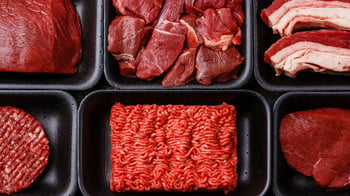The Most Costly Claims and Commodities: What Are They and How Should You Handle Them?
Commodity value and risk of transport are two factors that drive profit margins for freight brokers. Yet the most costly commodities and corresponding cargo claims may surprise you.
In 2019, the top ten most costly commodities processed by Armstrong included:- Organic salted butter
- Seafood
- Bacon
- Beef
- Chicken
- Chewing gum
- Avocados
- Furniture
- Tractors
- Cherries
With damage ranging from $62,000 to $163,000, these commodities turned into high risk loads for Armstrong agents.

If the value of your cargo exceeds 100K, what should you do?
Understanding the risks of cargo transport as well as the value of your customer’s cargo is vital. If you determine that the value of the cargo exceeds $100,000 (which is the basic motor cargo insurance coverage that the majority of contract carriers have), what should you do?
1. Understand the Load Requirement
If hauling over-dimensional cargo, such as machinery or other heavy-haul equipment, secure the required government permits, escorts or pole cars and establish a written route plan.
Understand the temperature requirements for temperature-controlled products and double check that the requirements provided in a customer’s email load tender match the requirements on the freight documents.
Examine stacking and/or securement guidelines for the commodity being shipped and compare it to the instructions provided by the customer. Ensure the carrier understands and complies with all instructions and acknowledges the instructions in writing within a Rate Confirmation.
2. Use a Carrier You Know
Entrusting an unfamiliar carrier with a high risk/high value load is not best practice. If a carrier with exceptional customer service costs slightly more than a carrier unknown to you, the risk in hiring the unknown carrier is rarely worth the extra profit.
3. Reduce Risk by Demanding More From Your Carrier
A carrier’s goal is to deliver cargo on time and ensure acceptance by the consignee. Set your carrier up for success by clearly communicating customer and cargo requirements.
Rate confirmations should include the following:
- Instructions regarding load securement (blocks, straps, braces, etc.)
- The requirement for photos to be taken at loading and off-loading
- Clearly stated fines for lateness, missed check-calls, lost BOLs, etc.
- Updated contact information for dispatch, drivers, shippers, and consignees
- Demand for prompt notice of accessorial and lumper charges
Costly cargo claims happen when you least expect it. Confirm the value of each load and ask your customer what specific instructions and expectations they may have for unique cargo.
Finally, communicate those requirements, in writing, to the carrier. Be sure to entrust your customer's high-risk and/or high-value loads to a reliable carrier that you've worked with previously.
About Emily M. Chiarizia, Esq.
Emily Chiarizia has been with Armstrong since 2018. As General Counsel, Emily is responsible for litigation management, internal policy development, compliance, risk management, contract negotiation, and the resolution of commercial cargo matters for Armstrong's 130+ agency offices.



.jpg)